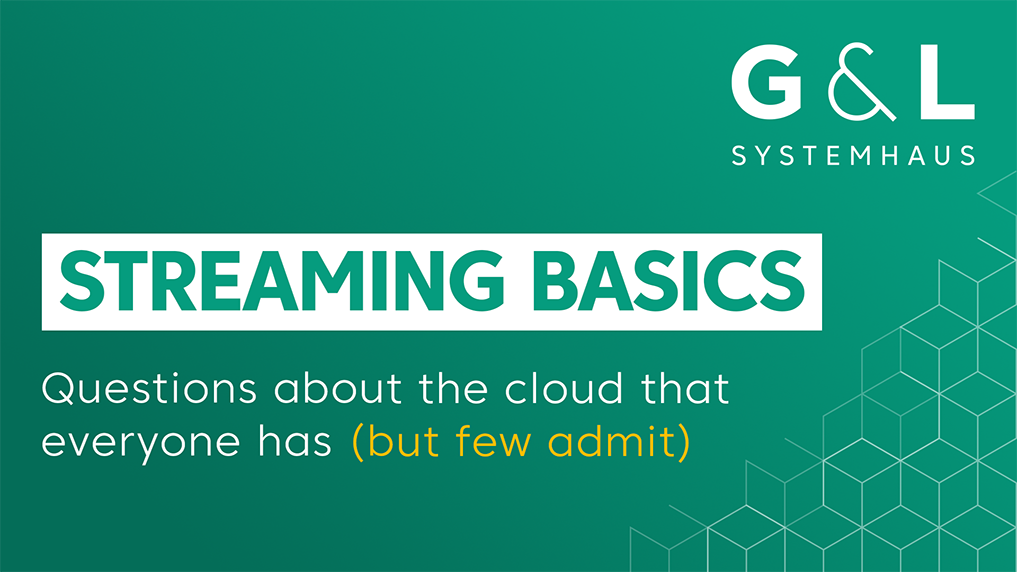As traditional media companies shift their content entirely online, the need for dependable and scalable products has never been greater. Higher video resolutions, increased viewer demand, and expanding content media libraries are pushing the limits of traditional infrastructure. Enter edge computing, multi-cloud, and hybrid cloud – concepts that might sound intimidating but are key to optimizing performance.
Let’s revisit some of the most common questions you might be thinking, but may not feel comfortable asking again. We’re all streaming friends here.
Streaming Basics: A quick refresh for the experts
Revisiting familiar concepts is always important to ensure we have the right foundational understanding.

Streaming delivers video and audio content in real-time or on demand by dynamically sending data in chunks via protocols like HLS or DASH. Success depends on low latency, high availability, and scalability – all of which are strengths of cloud solutions.
- Live Streaming: Latency remains the biggest hurdle; edge computing and protocols like LL-HLS help keep delays to a minimum for large-scale delivery.
- On-Demand Streaming: Efficiently managing massive libraries and high-res content requires smart storage, retrieval and packaging strategies.
Peak performance at scale is the name of the game. CDNs and auto-scaling ensure reliable, high-quality delivery, even during peak traffic events like global sporting championships.
That’s the groundwork – now let’s dive into the good stuff.
What is edge computing? Why does it matter?
Edge computing brings data processing and storage closer to the users or devices consuming and generating the data.
It’s like having a snack bar in your living room instead of going all the way to the kitchen for every bite.
By processing data near its source, edge computing reduces the likelihood of network-related issues, as fewer hops are required. It minimizes dependency on centralized data centers and ensures real-time responses for systems that demand instant, reliable performance. Leveraging existing compute power at the edge makes it ideal for decentralizing workloads. For example, tasks like per-client manifest manipulation can be handled directly on the edge, instead of going back to an origin for every request.
What is multi-cloud, and how does it help?
Multi-cloud means using more than one cloud provider to run applications, store data, or process workloads. This approach avoids over doing it on a single provider, therefore improving resilience and costs by choosing the best tools from each platform.
Public cloud vs. private cloud: What's the difference?
A public cloud is a shared infrastructure provided by third-party vendors like AWS, Azure, or Google Cloud, offering scalability. It’s like renting an apartment – you share the building but have your own space.
A private cloud, on the other hand, is dedicated infrastructure managed privately, either on-premises or hosted. This can be particularly useful if your media workflows involve on-premises hardware-dependent components like SDI or ASICs, or if you’re managing egress-traffic-intensive applications. Many businesses go for a hybrid model to leverage the advantages of both public and private clouds.
What is hybrid cloud?
A hybrid cloud combines public cloud services with private cloud, or on-premises infrastructure. This setup allows businesses to keep sensitive workloads in-house while leveraging the scalability and flexibility of the cloud for other tasks.
How do I choose the right cloud setup?
Selecting the best cloud architecture depends on your specific needs, such as data sensitivity, performance requirements, and budget. It also depends on if you can move parts of your setup to a different infrastructure or not. Systems integrators like G&L Systemhaus can help you evaluate these factors to design a setup that aligns with your goals.
Is edge computing always necessary?
Not always. Edge computing is most beneficial for applications requiring low latency, and real-time processing, but it can also be expensive.
How do I balance security and accessibility?
A hybrid or multi-cloud setup often provides the best balance, enabling you to keep sensitive workloads secure on private infrastructure while leveraging public cloud for scalability.
Can I switch cloud providers later?
In a lot of cases, yes, but if so, it requires very careful planning. That’s why G&L focuses on helping clients avoid vendor lock-in by using multi-cloud setups and open standards, making future transitions smoother.
I want to optimize our cloud infrastructure, ensure a smooth transition, and avoid getting tied down to a single vendor. How do I pull that off?
Easy: partner with a systems integrator (wink, wink). We’ll help you discover the setup that’s just right for you, and not push you to the Edge…
We understand these concepts can feel overwhelming, but that’s where a systems integrator can be useful for smart long-term planning. We can even handle the technical details, from data migration to application reconfiguration, as much or as little as you prefer. Our goal is to help you:
- Adapt to changing needs with flexible strategies
- Reduce operational costs by optimizing platform choices and configurations
- Maximize the value of your cloud investment by cutting unnecessary expenses
- Provide expert guidance and support throughout your cloud journey
See? The cloud isn’t so cloudy after all – you’ve got this! And if you ever feel stuck, we’re just one message away: